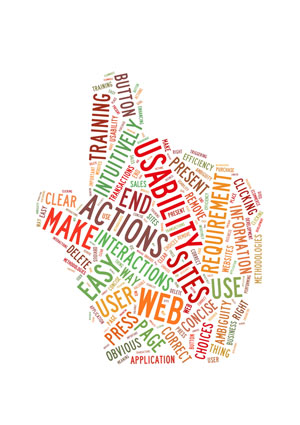 If your website is causing your staff to have to work around it, or perhaps even duplicate the work of the website, then it is time to review the site’s design and functionality.
If your website is causing your staff to have to work around it, or perhaps even duplicate the work of the website, then it is time to review the site’s design and functionality.
Every time you find yourself explaining to a customer that there’s a problem with the website it should serve as a reminder to get it fixed—or, if you’re in a big company, to get a message to those responsible for the site to explain the impact on the customer-facing front line.
***
Example:
I recently made an appointment online at a well-known large department store. It was straightforward and simple to do. Exactly on brand.
I was asked to pick a consultant from a list of names, or to select ‘anyone’. Not knowing any of the people, and there being no information to help me choose between them, I chose ‘anyone’.
I received a confirmatory email and a text telling me who I’d been booked to see, and what it would cost. Then, I received a reminder email and a text. That’s fine, though given I’d made the booking so soon before the date, it did mean I had a lot of communications in a short time.
Suggestion: if confirmation and reminder emails and texts go out within a day or two of each other, only send one set.
The day before my appointment, I had a message to say that they’d been double-booked, and they had to rearrange me. After the usual rounds of telephone tag, I spoke to ‘my’ consultant, who told me that it happened quite a lot. “Some problem with the computer system”. Hmm. OK. But this person wasn’t able to rebook me, so I’d get a call the next day.
At this point, I was considering cancelling the booking completely, out of frustration.
I waited. Another person called the next day and conducted a preliminary discussion about what I wanted. She told me that the problem was that not all the staff listed on the website had all the skills required for all the appointments, and the person allocated to me hadn’t had the relevant training.
Suggestion: if you are listing names on the site, and asking the customer to choose someone, give them some indication of which people would be appropriate. Or—better—force an appropriate choice: ideally, given service A has been selected, then only people X, Y and Z would be available to choose from.
Still, the excellent customer service skills of the second person meant that I did make the rebooking. And received another set of 4 messages to tell me what I’d booked when, with whom, and what it would cost.
That was yesterday.
Today I had another call, from yet a third person, to check that I had realised that I would have to pay in advance for this service.
Apparently, some people who book online don’t realise that they have to pay. Yes, despite it saying so on the website, and in each of the (by then) 8 texts and emails. So, the store calls people who have made a booking to check that they know they’ll have to pay. And yet they didn’t ask me to make that payment as part of this call (I offered; but they said ‘no, pay on the day’).
That makes 6 phone calls between me and the store dealing with this simple online booking.
Suggestion: given that the store has a high-function online shop (I know, because I buy from them regularly), why not take online visitors who have booked an appointment for which they have to pay in advance through the online checkout immediately? That way the store gets its money in advance, and people who haven’t realised that they have to pay, and don’t want to, will drop out of the process, freeing up the appointment time for someone else.
Final, and most important, suggestion: if you suspect that a web page isn’t clear to the visitor, then review the web page. Maybe the content isn’t clear, or the process is confusing. In this case, maybe a mandatory checkbox ‘I understand that this will cost £x’ before completion would help.
I know that people skim read online, but some usability testing would not only reduce the level of frustration in their customers, but also reduce the workload on their staff, and hence costs (a bit).
And I wouldn’t have had that brand-damaging experience.
Lucy is Editor at Corporate Eye


